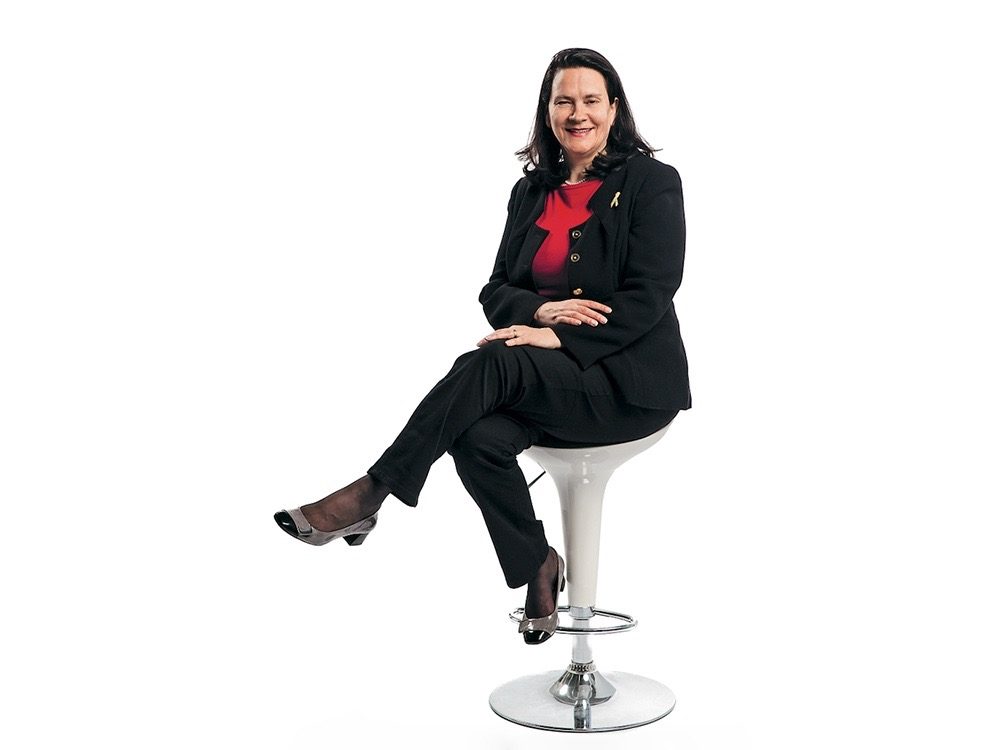
Great Canadians: From Hand to Hand
As a civilian member of the Department of National Defence in Ottawa, Valerie Noftle worked to assist Canadian soldiers during the final year of the military’s arduous campaign in Afghanistan.
Then the director general, public affairs, Noftle helped organize the National Day of Honour on Parliament Hill in May 2014—two months after the end of the 12-year mission, which claimed the lives of 158 Canadian soldiers. She was moved by the dedication of her colleagues and by their willingness to sacrifice: “They are terrific, extremely hard-working, professional people. They give so much for their country,” says Noftle.
She retired from the federal government in late 2014 to pursue a graduate degree in law and explore her passion for photography. Early last year, Noftle also embarked on a personal Canada 150 project: paying homage to our country’s soldiers.
The 53-year-old decided to use her shutter skills to raise money for homeless veterans, an issue that’s attracted little attention, even though a 2015 study estimated that 2,250 Canadian veterans use homeless shelters on a regular basis.
In January 2016, Noftle began visiting veterans or inviting them to her studio in Ottawa’s Little Italy neighbourhood to photograph their hands. “In the same way you can tell a lot about someone by their shoes,” says Noftle, “you can understand a lot about someone by their hands.”
Retired Lt.-Col. Rita LePage, 57, one of Noftle’s 13 subjects, was taken aback when she learned that her former DND colleague wanted to focus on her hands.
“I thought, Oh my goodness, they’re in horrible shape,” says LePage, laughing. “I’m not a girlie girl: I don’t have long nails, coloured nails or particularly nice nails. I’ve never been self-conscious about it, but I’ve never gone for a manicure.”
Noftle asked each veteran to choose a dried maple leaf from among a selection and hold it up for the camera. It was an unexpectedly emotional experience for LePage, who served in Afghanistan, Bosnia, Croatia and Cyprus over the course of her 31-year military career: “I picked up that maple leaf with such delicacy and such reverence for it,” she says.
Noftle didn’t coach her subjects on how to pose; each decided to do something different.
It was only upon viewing his photograph that retired Lt.-Gen. Stuart Beare, 55, realized that his hands had formed the shape of a heart. “I didn’t do that on purpose,” he says. “But that’s how I feel. I love this country.”
The series also features the hands of retired Brig.-Gen. Jack Watts, 96, a decorated Second World War pilot, and those of his war bride, Norma. Another photo shows the hand of 56-year-old retired master seaman Larry Beattie, who suffers from post-traumatic stress disorder, resting on his service dog, Banjo. Still another spotlights the hands of retired Brig.-Gen. Sheila Hellstrom, age 82, the first woman to reach the rank of Canadian Forces general.
Staff at the Diefenbunker, Canada’s Cold War museum, have chosen Noftle’s series to help mark the country’s sesquicentennial: the exhibit of her prints, From Hand to Hand, is on display there until the end of July.
The photos have also been made into a 2017 desk q, on sale at the museum for fundraising purposes. Noftle hopes to collect $5,000 for Support Our Troops, which will then direct donations to organizations such as Soldiers Helping Soldiers, a volunteer group based in Ottawa that sends men and women in uniform onto city streets to find homeless veterans and connect them to social services.
Since 2013, they’ve identified more than 400 veterans requiring help in the national capital alone.
“I was absolutely shocked by the numbers,” says Beare. The honorary patron of Soldiers Helping Soldiers is unstinting in his praise for Noftle and her advocacy efforts on behalf of homeless vets: “What she’s doing is perfect.”
To learn more about Canada’s veterans, read Roméo Dallaire: The RD Interview.